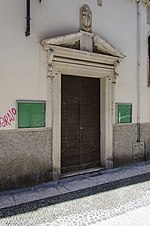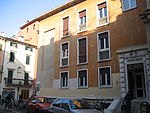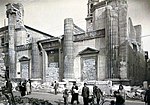Scaliger Tombs

The Scaliger Tombs (Italian: Arche scaligere) is a group of five Gothic funerary monuments in Verona, Italy, celebrating the Scaliger family, who ruled in Verona from the 13th to the late 14th century. The tombs are located in a court outside the church of Santa Maria Antica, separated from the street by a wall with iron grilles. Built in Gothic style, they are a series of tombs, mostly freestanding open tabernacle-like structures rising high above the ground, with a sarcophagus surmounted by an elaborate baldachin, topped by a statue of the deceased, mounted and wearing armour. According to the French historian Georges Duby, they are one of the most outstanding examples of Gothic art.
Excerpt from the Wikipedia article Scaliger Tombs (License: CC BY-SA 3.0, Authors, Images).Scaliger Tombs
Via Arche Scaligere, Verona Veronetta
Geographical coordinates (GPS) Address External links Nearby Places Show on map
Geographical coordinates (GPS)
| Latitude | Longitude |
|---|---|
| N 45.443643666667 ° | E 10.9989275 ° |
Address
Arche Scaligere
Via Arche Scaligere
37121 Verona, Veronetta
Veneto, Italy
Open on Google Maps










